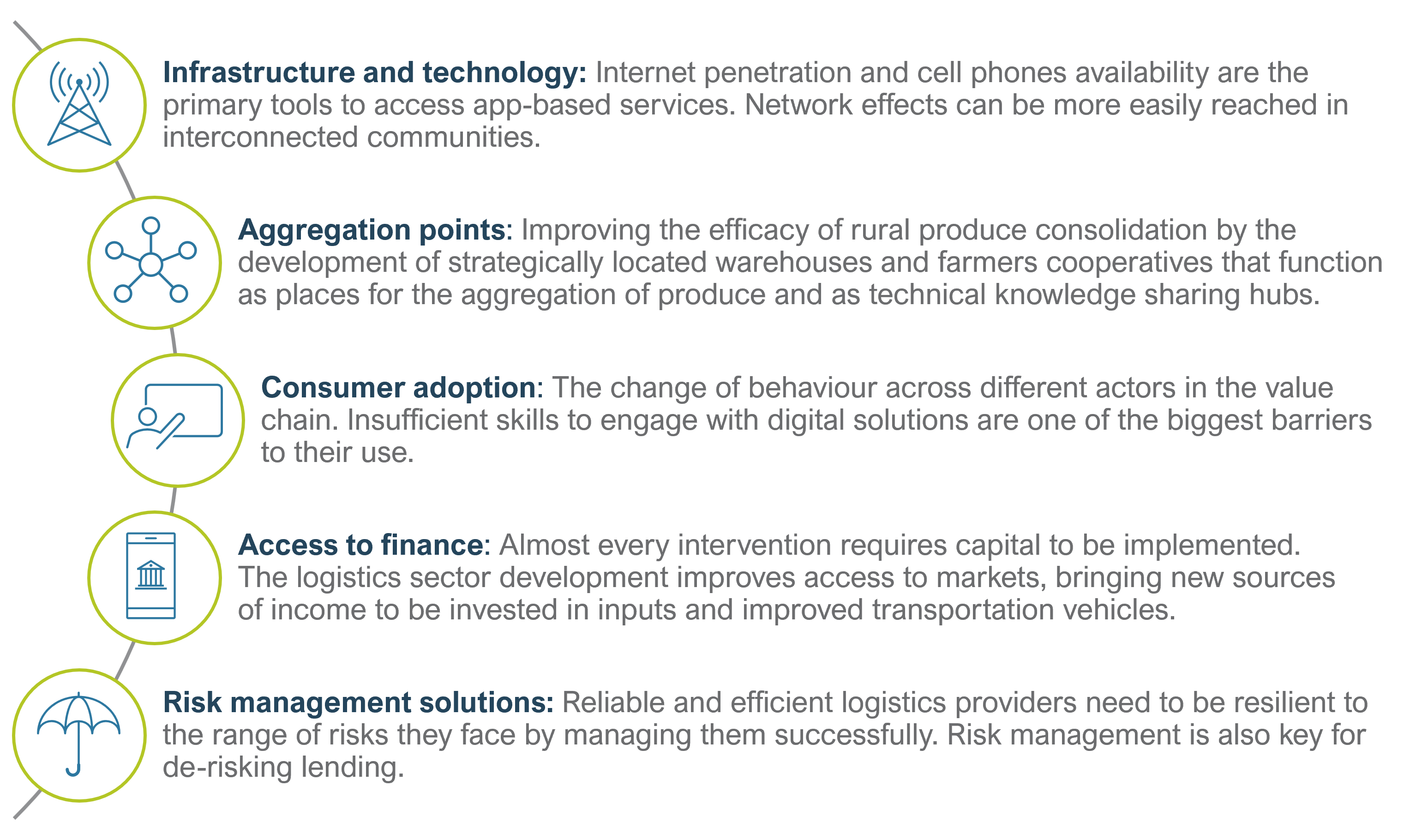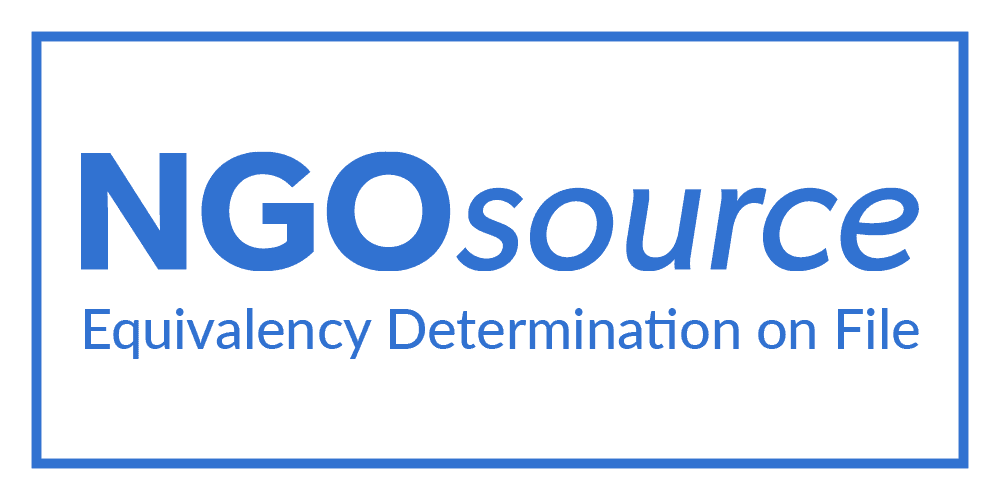Unlocking the potential of digital platforms to transform food logistics in Africa
Unlocking the potential of digital platforms to transform food logistics in Africa
12 January, 2022 •In our previous article, Can digital platforms transform first mile food logistics in Africa?, we discussed the importance of the agricultural sector to food security, income and employment in Africa as well as some of the challenges the sector faces in efficiently coordinating. We also introduced the role digital logistics platforms can potentially play in improving these efficiencies. In this article, we will focus specifically on the gaps that are hindering the development of digital platforms in the region as well as the key enablers needed for digital platforms to successfully transform the coordination and efficiency of the logistics of African agriculture supply chains.
Gaps along first mile logistics
Driven by the growth in e-commerce platforms and boosted by the effects of COVID-19, last mile logistics, or the delivery of goods to end consumers (e.g. digital marketplaces, food delivery apps and general delivery services), has grown rapidly within cities across Africa. However, first mile logistics have experienced far less investment, innovation and development. Some of the first mile challenges identified are:
- It is difficult to cater for farmers as it requires an aggregation effort to collect a shipment size that makes the coordination worth it.
- Poor infrastructure and transport services makes the first mile the most expensive in terms of tonne/km.
- Innovation within established legacy sectors with traditional challenges is cumbersome, expensive, and difficult. That is why most innovations in the sector have focused on in-farm improvement tools using weather, markets, and soil data, but not logistics developments.
There is clearly room for growth and innovation in agriculture’s first mile and digital platforms’ open and participative infrastructures, simpler scaling mechanisms, and anytime access position them as potential solutions. The ease with which digital platforms can scale and interconnect diverse actors in the supply chain presents an opportunity for the overlooked first mile to connect to local and global consumer markets more efficiently.
Key enablers for digital platforms along the first mile

In order for these first mile logistics platforms to effectively scale, we have identified five common enablers that either already need to be in place or for which innovative solutions need to be developed: infrastructure and technology, enhanced aggregation points, higher consumer adoption, risk management solutions, and sufficient access to finance. The specific infrastructural, behavioural, and financial requirements mentioned need to be put in place to unleash the full potential of digital platforms. These enablers are also key for enhancing network effects: incremental benefits that users obtain from the growth of digital platforms and that foster quick scaling of the same. A good example of this is seen in the e-hailing sector where, as more drivers join the platforms, more users also subscribe, initiating a positive cycle of growth.
Enabler 1: Infrastructure and technology
The infrastructure and technology enabler refers to the basic structures necessary to interact easily with digital technology solutions. When it is not present, this enabler becomes the most relevant and challenging enabler to fulfil due to its high costs. The first consideration for this enabler is access to electricity, followed by access to the internet and mobile internet services. A third infrastructural consideration is having access to cellular phones in general, and smartphones in particular. A fourth consideration is sufficient and accessible roads, which has been reported as one of the biggest challenges for farmers in the first mile. Finally, cold storage and cold chain management solutions are crucial to avoid food losses.
The development of infrastructure and technology requires the investment of large sums of capital and the coordination of actors in all levels of government to identify the most critical infrastructural requirements. However, some companies have begun to tackle the gaps in infrastructure through innovation, such as Solar Freeze in Kenya and Ecozen in India, who have developed solar-powered cold storage rooms that allow farmers to store goods for several days.
Enabler 2: Aggregation points
Establishing more and better-equipped aggregation points is considered a fundamental enabler due to the first mile’s many-to-one nature, which requires small-scale supplies from individual farms to be bulked in lots. Digital platforms can optimise the interactions between actors in the food supply chain and logistics services providers. Still, that optimisation initially requires aggregation points to be sufficient, organised, and well distributed. In China, companies like Cainiao and Alibaba have implemented bilateral systems that, in addition to logistics services to transport products out of farms, contemplate express deliveries available to rural shoppers in the first mile and farm-to-hub pick-up services for farmers interested in selling online. These measures are trying to reduce geographic isolation and shipping costs.
Enabler 3: Consumer adoption and readiness
Once the basic infrastructure is in place, digital adoption and digital skills are a strategic imperative for food supply chain members to be able and willing to interact with digital platforms. Moreover, stakeholders should be able to witness the value they can derive from interacting in digital platforms through use cases that show them the reasons to use technology and expose them to social influence in its utilisation. Another important component for consumer adoption is the quality and reliability of the services and products received, which generate trust and an environment of confidence towards using technology. Finally, farmers’ and buyers’ existing financial relationships can foster the use of technology to improve the efficiency of their commercial relationships.
In China, farmers’ specialised cooperatives are trusted institutions among farmers and support farmers in adopting new technologies, so they can be leveraged to drive the consumer adoption of a digital logistics platform. Another example is how Cainiao, a logistics platform, implemented a “one young person, one laptop and one internet connection per village” initiative that intended to address the initial difficulties some older farmers had in adopting new technology. The programme created small hubs to provide farmers with access to the internet and allowed unskilled farmers to learn digital skills from a trained person.
When evaluating these enablers, policymakers and development partners must take context into account as each country has different levels of development, and each region within a country is on a different stage of engaging with digital tools.
Role of financial service providers
Enablers 4 and 5: Access to finance and Risk management solutions
So how then can financial services providers help platforms bridge the gap between farmers and efficient, safe, and profitable first-mile logistics services providers? With two of the key enablers being access to finance and risk management solutions, insurers and credit providers are uniquely placed to support innovation. On the access to finance front, logistics providers need lump sums of capital to afford vehicles, like trucks. The greater the access to larger lump sums of capital from lenders, the larger and newer the trucks that logistics providers can purchase. As general maintenance costs for newer trucks are lower, this can have a long-lasting impact on the sustainability of these individual operators and hence impact the potential development of MSMEs across the transport sector, allowing the network to scale. A further benefit is that newer, more efficient vehicles also have a lower impact on the environment. In Zimbabwe, Thumeza offers access to credit for small scale transporters based on their transaction data.
On other hand, risk management solutions, such as the distribution of insurance through digital platforms, can increase the resilience of MSMEs in every section of the supply chain, which, in turn, can result in a higher usage of the services on the platform as businesses grow. For instance, de-risking transporters’ activities can attract more drivers as value is added to the exchanges with producers. In Asia, apps such as Grab or Go-jek already offer microinsurance and financial services for drivers and users, which can be directly acquired online through their platform’s embedded payment system. Additionally, with the implementation of risk management technologies such as tracking technology for vehicles and weather conditions sensors for crops, credit providers have access to the driving patterns and routes of a vehicle and the farming performance of a region; this data gives banks and other credit providers the confidence to lend money as they can better manage and model risk. In Kenya, agritechs such as Pula use data-driven techniques to provide accurate indexed crop insurance.
Conclusion
Digital platforms offer great potential to overcome some of the issues of African food supply chains. However, digital platforms’ technology for logistics and e-commerce has been mainly implemented at the last mile, far from farms. This is because of how difficult it has been to implement them in the first mile. The five enablers identified in this article are key to unlocking the potential of logistics platforms to create more efficient first mile logistics in the African agriculture sectors.
You can read more of our work on technology and innovation here and the potential of digital platforms here. If you have any questions or would like to work with us, please contact Jeremy Gray.
